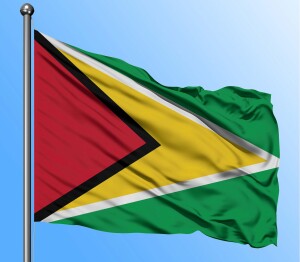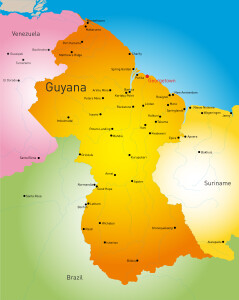Congratulations are in order…as of July 28, 2021, Demerara Rum has been awarded a Protected Geographical Indication (GI) in the European Union!
Demerara—a region located within the independent country of Guyana, on the northern coast of South America—has produced sugar cane and rum for over three hundred years. The production area is located on the low coastal plain of Guyana, bound by the Boeraserie River on the west and the Abary Creek on the east.
The production specification emphasizes the importance of the tropical climate of the area, the traditional production techniques, and the mineral-rich local ground water. These factors combine to create the characteristic high-congener Demerara Rum flavor consisting of “hints of sugar-cane sweetness,” fruity and floral notes (via the fermentation and distillation processes), and age-derived aromatics (to include nutty, spicy, woody, herbal, or earthy aromas).
According to the standards, Demerara Rum GI must be produced as follows:
- Sugar cane used in the production of Demerara Rum must be grown within the defined region.
- Fermentation and distillation must be accomplished within the defined region.
- Products labeled as Cask Aged Demerara Rum, Special Reserve Demerara Rum and Grand Special Reserve Demerara Rum must be aged and bottled within the defined production zone.
- It may be produced using either raw sugar cane juice or molasses. Note: the specification allows for the use of any type of “sugar cane substrate,” but in reality most Demerara rums are produced using molasses.
- Column still or pot still distillation may be used. The product specification details the distillation process as follows: “The distillation of light- and medium-bodied Demerara Rums take place in Continuous Stills of 2/3/4/5 Columns, and heavy-bodied Demerara Rums take place in single/double pot stills.”
- The stills must be comprised of Guyana Greenheart hardwood, copper, and/or stainless steel.
- For products aged in Guyana, aging takes place in well-ventilated warehouses “situated at sea level on the coast of the Demerara region bordering the Atlantic Ocean.”
- Such aging must take place in oak barrels (the product specification notes” American white oak casks, typically, or other casks as required”) under “tropical climatic conditions (typically 24-32 °C and 70 % humidity).”
- Single-marque (single batch) rums and blends are allowed.
- Sugar is allowed as a post-distillation additive in order to “round off the final taste of the product up to a maximum of 20 grams per liter.”
In addition, the following styles of Demerara Rum are specifically defined per the product specification:
- Demerara Rum: all styles of Demerara Rum may be single marque or a blend; however, 100% of the product in the bottle must be sourced from within the defined production zone. (In other words, they may not be blended with any non-Demerara Rum and still use the moniker “Demerara Rum.”)
- Old Demerara Rum: aged for a minimum of 2 years
- Cask Aged Demerara Rum: aged for a minimum of 3 years
- Special Reserve Demerara Rum: aged for a minimum of 12 years
- Grand Special Reserve Demerara Rum: aged for a minimum of 25 years
More details may be found in the product specification, linked below.
Congratulations, Demerara Rum!
References/for more information:
- Demerara Rum GI-Product Specification
- Demerara Rum-Extract from the Official Journal of the EU-July 29 2021
- Demerara Distillers – Home
Post authored by Jane A. Nickles…your blog administrator: jnickles@societyofwineeducators.org

